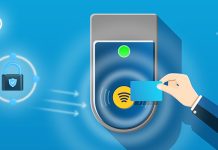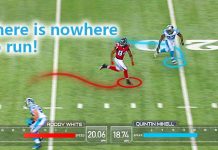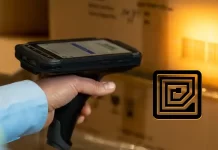In today’s digital age, technology is transforming the way students learn. Educators increasingly recognize QR codes as an innovative tool for inspiration and progress. Research shows that QR codes enhance the student experience through active participation and motivation. They provide an engaging platform for multidimensional learning experiences tailored to individual needs, skills, and interests. QR codes open up possibilities for active exploration, deeper understanding, and shared progress in diverse classrooms. In this article, we’ll explore 12 great ideas for using QR codes in the Classroom, providing educators with practical strategies for leveraging this powerful tool to promote effective instruction and meet learning objectives.
A Quick Tutorial
QR codes are becoming increasingly popular in the Classroom as a versatile and engaging tool for instruction. They are quick, scannable, barcode-like images that can take students to specific digital destinations. To use QR codes in the Classroom, students will need an app that reads the codes, which can be easily downloaded for free on Android and Apple devices.
QR codes can be used in various ways to enhance the learning experience. They can be used to send students to a specific website, video, document, or other digital resource related to class material. Additionally, QR codes can be used to create interactive classroom displays, conduct virtual tours, and even gamify learning.
You can click here for more details about QR codes
How to Use QR Codes in the Classroom?
QR codes provide an easy and versatile way to integrate technology into the classroom. Teachers and students can interact with QR codes using their smartphones for educational purposes and enhanced organization.
Dynamic QR codes are invaluable resources for instructors and pupils. Educators can utilize QR codes in many ways, such as:
- Streamlining instructional materials and student work;
- Embedding links to educational content to support learning;
- Adopting a paperless approach by scanning QR codes instead of printing copies;
- Linking quizzes, exams, and assignments to QR codes for easy access;
- Creating interactive lessons and games that motivate student participation.
Students simply use their mobile devices to access whatever information or functionality a QR code provides. QR code technology enables a seamless way to escape the confines of physical handouts and embrace an interactive digital learning environment.
Whether organizing resources, providing supplemental learning aids, or developing more engaging activities, QR codes offer teachers and students a simple yet powerful tool to enhance the classroom experience. With a quick scan, anyone can unlock the possibilities that QR code integration brings to the educational setting.
How Students can Scan the QR Code
Students today grew up with technology as an integral part of their lives, so incorporating digital tools such as QR codes and smartphones into learning activities is a natural fit.
Nearly all smartphones and mobile devices offer built-in QR code scanning capabilities or camera apps that can scan codes. To access the information in a QR code, follow these steps:
- Open the device camera or a dedicated QR code scanner app.
- Ensure the app supports QR code scanning.
- Position the camera so that the QR code fills the screen.
- Wait 2-3 seconds as the content linked to the QR code open.
If students do not have a device with QR scanning support, they can download a free QR code scanner app like QR TIGER Generator. This app is available on the Google Play Store for Android and App Store for iPhones.
QR TIGER Generator provides a helpful yet comprehensive set of tools for working with QR codes. In addition to scanning codes, it can generate and create QR codes linking to websites, contacts, maps, videos, and more.
Teachers and students alike can leverage QR codes and scanning apps to bring resources to life and enhance engagement in a seamless, technology-powered way. With a quick scan, anyone can unlock interactive lessons, organize information, and forge connections between the physical and digital worlds.
12 Great Ideas for Using QR Codes in the Classroom
QR codes shape tomorrow by expanding minds today through innovative, multifaceted experiences. They make abstract concepts more compelling and memorable, revolutionizing teaching to ignite passion and fuel success. QR codes in the Classroom inspire progress, cultivate inspiration and unveil talent. Here’s a collection of 12 great ideas for educators on using QR codes in the classroom.
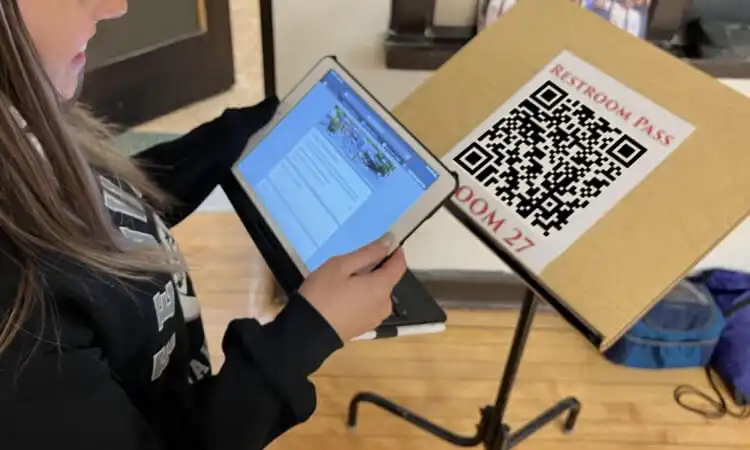
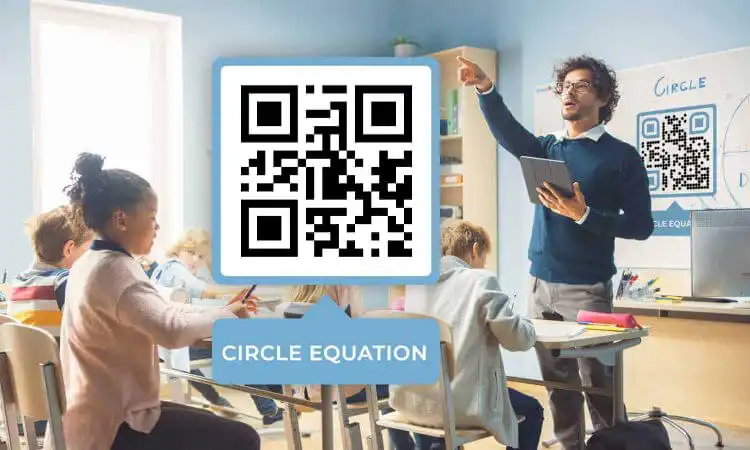
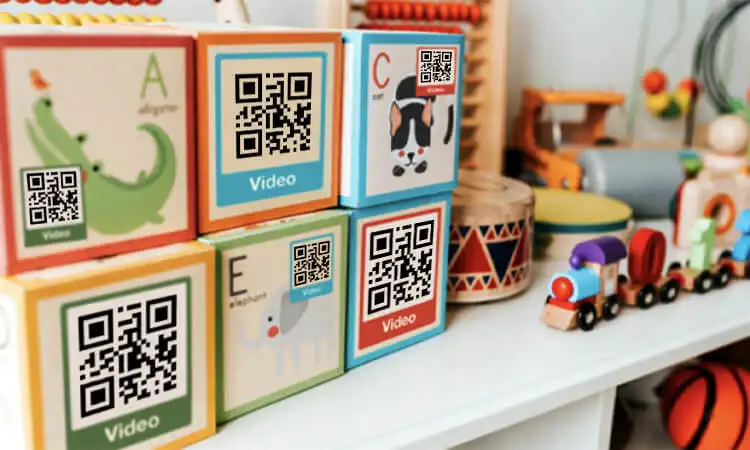
Using QR Codes in the Classroom to Create a 21st-century Resume
QR codes offer an innovative approach to creating resumes that engage students and uniquely showcase their skills. Students can create interactive and engaging resumes that stand out from traditional paper resumes by linking them to other digital content, such as their professional website or portfolio.
Creating a QR code resume engages students in technical writing and helps them develop valuable digital literacy skills that are essential in the 21st-century job market. This type of resume demonstrates a willingness to use technology professionally and can help students stand out from their peers.
Incorporating QR codes into resume-building activities can give students a creative and effective way to showcase their skills and achievements. It’s a great opportunity for students to think outside the box and show their innovative side.
Show Vivid and Interesting Exemplars
QR codes can be an excellent tool for linking students to examples of quality work and promoting engagement in the Classroom. By providing access to exemplars, students can better understand what is expected of them and how they can improve their work.
QR codes can link students to various exemplars, from PowerPoint or Slideshare presentations to videos of people speaking a foreign language related to the current lesson. This can be particularly useful in language classes, as students can listen to native speakers and improve their pronunciation and comprehension skills.
Using QR codes to give students access to exemplars, teachers can inspire them to set high expectations for themselves and produce their best work. This can be a powerful motivator and help students feel more confident and engaged in learning.
Here are more uses for QR codes: Museum QR Code
Provide Quality Services
QR codes can be a powerful tool for integrating service learning projects into the Classroom. By having students create the codes that link to their content, teachers can help students develop a deeper understanding of the impact they can make in their community.
For example, students working on a project about spreading awareness about germs can create QR codes that link to their content, such as a poster or video. These codes can be posted around the school or shared in a parent newsletter to raise awareness about the issue.
By taking it a step further and creating QR codes for local businesses or organizations, students can show support for the community and promote the use of QR codes to a wider audience. This can be a great way to engage with the community and promote service learning.
Integrating QR codes into service learning projects can also help students develop important skills like project management and community engagement. This type of activity can be a valuable experience that prepares students for future success.
Using QR Codes in the Classroom to Promote Environmental Practices
QR codes can be an effective tool for teachers looking to reduce paper waste and promote eco-friendly practices in the Classroom. By providing students with a QR code that takes them to the digital version of instructions, announcements, or assignments, teachers can reduce the amount of paper used in the Classroom.
Using QR codes in this way helps save space on classroom walls and promotes digital literacy skills that are essential in the 21st century. It’s a simple yet effective way to integrate technology into the Classroom and promote a more sustainable learning environment.
Incorporating QR codes into classroom instruction can also help teachers create a more efficient and organized learning environment. By providing students with a clear and concise digital version of materials, teachers can reduce the likelihood of confusion or misplaced paperwork.
QR codes can also be used in more diverse industries: QR Codes in Marketing
Incentivize and Praise
QR codes can be a useful tool for incentivizing positive behavior and promoting student engagement in the Classroom. Teachers can use QR codes to award prizes or recognition to students who achieve academic or behavioral goals, such as passing a test or demonstrating good teamwork.
Using QR codes in the Classroom can be an effective way to incentivize positive behavior. For example, teachers can have students scan a code that leads to an animation or badge to reward their achievements. If a student passes a test on commas, they could receive a code that takes them to a “Comma Guru” badge. This type of incentive program can help to motivate students and promote a positive learning environment.
QR codes can also be used to encourage positive feedback and recognition among students. Students can create QR codes to reward each other for good behavior or academic achievements. For instance, if a student sees something great happen, they can give a code that links to a message such as “Good Job from Andrew” or “Thanks for doing your part for the team.”
Using QR codes in the Classroom, teachers can create an engaging and interactive learning environment that promotes student success. It’s a simple yet effective way to motivate students and promote positive behavior.
QR codes can also be used in more diverse industries: QR Codes in Retail
Making Learning Stations Beyond Imagination
QR codes unlock a world of possibilities and ignite the imagination within every student. When embedded in learning stations around the Classroom, QR codes transport students to realms of discovery beyond imagination. A single scan transports learners to virtual labs, interactive experiments, animated stories, global classrooms, and more.
QR-coded learning stations fuel passion and purpose by offering portals to explore complex topics through rich multimedia experiences. They invite students to dive deep into subjects that spark their interest and talent, following personalized paths to progress at their own pace. No concept is out of reach, thanks to QR codes’ boundless resources.
Beyond study topics, QR coded learning stations spark innovation and critical thinking. They prompt questions that inspire research, reveal new perspectives that shape understanding, and encourage creative problem-solving. When minds are open to imagination, new ideas can change the world. VR simulations, online collaborations, and multimedia explorations come alive at QR stations, transforming abstract concepts into memorable experiences.
A classroom filled with QR-coded learning stations ignites motivation and thirst for discovery. It gives learners wings to soar beyond the confines of lesson plans and lectures, following their genuine interests and curiosity. Personal progress is tracked through interaction and advancement, not just participation. Mastery is achieved by passion, not an obligation. QR stations fuel dreams and determine destiny.
QR-coded learning stations revolutionize static classrooms into harbors of possibility where potential knows no bounds. They offer explorers maps to uncharted territories of knowledge, unlocking hidden talents and unlimited growth opportunities. Once transported to virtual worlds of wonder, QR codes make the impossible possible and inspire the lifelong joy of learning.
This article will show you a different kind of QR code: Maximizing QR Code Signage for Marketing Campaigns
Have Students Check Their Answers and Reflect
QR codes open up possibilities for student reflection, feedback, and growth. When embedded in assignments or tests, QR codes provide an easy way for students to check their answers and gain valuable insight into their understanding. Scanning a code with a smartphone instantly reveals the correct responses, allowing students to evaluate their thinking, recognize mistakes, and develop better strategies for mastering concepts.
Reflection is key to learning and progress. QR-coded assignments promote reflection by allowing students to compare their work with exemplars, evaluate strengths and weaknesses, ask clarifying questions, and set specific goals for improvement. Teachers can then provide targeted guidance and support based on students’ reflections to help strengthen understanding and boost achievement.
QR codes also provide a convenient method for monitoring individual learning and tracking progress over time. By having students scan a QR code to check answers after completing work, teachers gain valuable data on which concepts students have mastered and which need more review. This data allows for a personalized, data-driven approach to instruction and helps ensure all students progress appropriately.
Beyond reflection and monitoring, QR codes simplify the process of checking assignments and tests while integrating technology meaningfully. Teachers save time that would otherwise be spent physically checking each paper and can provide students with prompt feedback using QR codes. This streamlined approach creates an efficient learning environment with more time for creative and engaging instruction.
Provide Interesting Extended Tasks
QR codes unlock a world of possibilities for learning in the Classroom. When embedded in assignments, QR codes transport students to exciting new discoveries and adventures in knowledge. Scanning a code with a smartphone opens the door to delving deeper, exploring beyond the basic curriculum, and following their genuine curiosities.
QR coded assignments kick learning into high gear by fueling student motivation and engagement. No longer are students limited to the standard lesson—they can challenge themselves with advanced extension activities, dive into rich multimedia resources, collaborate with global peers, and customize their learning experience. QR codes set learning free, lifting the ceiling of potential and unleashing students’ innate thirst for understanding.
Using QR codes transforms static worksheets and textbooks into portals to an endless array of learning experiences. They bring the outside world into the Classroom and allow students to make real-world connections. QR codes also save teachers time and effort while integrating technology into the curriculum meaningfully and meaningfully.
Beyond engagement and personalization, QR coded assignments build higher-order thinking skills and academic excellence. They challenge students to analyze information, evaluate sources, make inferences, and form coherent arguments—skills that will serve them well beyond the Classroom. QR codes cultivate a growth mindset by inspiring students to push past perceived limits and achieve their full potential.
You can learn how to add QR codes to flyers with this tutorial
Compilation of Research Reports
QR codes transform research from static paper assignments into dynamic, collaborative processes. When embedded in resources discovered during explorations, QR codes allow students to share findings, build knowledge, and make connections across diverse perspectives.
QR coded research materials spark discussion and deeper understanding. They invite questions that probe beneath surface-level details, reveal new insights shaping meaning, and inspire innovative thoughts destined to change the world. By compiling QR codes in class wikis, on discussion boards, or on walls, research comes to life as students interact with and build upon peers’ work.
Beyond facilitating discussion, QR codes promote digital literacy and crucial research skills. They teach students to evaluate information, analyze sources, synthesize key ideas, and construct coherent arguments using multimedia content as evidence. Navigating from one QR code to the next helps develop an intuition for finding and verifying facts in an increasingly digital world.
A classroom filled with student-created QR codes becomes a hub for collaboration, progress, and possibility. It gives learners ownership of research and a voice in the learning process. Personal interests guide exploration, while passion fuels purpose. Mastery is determined not by obligation but by the desire to share knowledge with others. QR codes keep research relevant, meaningful, and memorable.
Create Interactive Labs
QR codes transform static skeletons and specimens into portals of possibility in the science classroom. When attached to models, charts, diagrams, or dissections, QR codes transport learners to a world of discovery beyond imagination. A single scan using QR codes in the Classroom unveils multimedia explanations, interactive simulations, guided tutorials, and real-world applications tailored to ignite the passion for scientific study.
QR coded discoveries fuel deeper exploration and progress. They spark questions probing beneath surface details, inspire new ways of thinking about concepts, and reveal insights shaping meaning using QR codes in the Classroom. Learners can re-examine topics from multiple angles, observing structure, function, relationships, and themes across subjects. Interacting with QR codes develops an intuitive grasp of complex science, normally abstract or intimidating.
Beyond bringing learning to light, QR codes promote active engagement and a lifelong thirst for discovery using QR codes in the Classroom. They give students ownership of exploration and opportunities to share knowledge with peers. Personal interests guide learning, while curiosity fuels purpose. Mastery is determined not by obligation but by wanting to understand how the world scientifically works at a cellular or systems level using QR codes in the Classroom. QR-coded activities keep science relevant, rekindling inspiration through boundless possibility.
Student-created QR codes transform passive observers into co-creators of experience using QR codes in the Classroom. Working together, students craft interactive guides, virtual simulations, multimedia tutorials, and innovative resources to enhance their understanding of their peers using QR codes in the Classroom. A classroom filled with student QR codes becomes a hub for collaboration, progress, and sharing new perspectives shaped by hands-on discovery using QR codes in the Classroom.
You can also learn more: QR Codes in Social Media
Differentiated Teaching
QR codes can be a game-changer for personalized learning and differentiated instruction in the Classroom. By embedding QR codes in assignments, worksheets, poems, or any classroom materials, teachers can provide easy access to tailored resources and experiences targeted to student needs, skills, and interests.
Using QR codes in the Classroom allows students to scan and unlock alternative explanations, multimedia tutorials, guided practice activities, or assessment options, enabling all learners to progress at their level. This approach fuels deeper understanding and growth, presenting concepts in multiple ways using visual, auditory, and kinesthetic modalities to reach diverse learning styles. Students can revisit topics from new perspectives and explore complex extensions based on individual readiness, building fluency and confidence in understanding how concepts work.
QR codes in the Classroom promote inclusion and inspire a passion for learning. They give students autonomy over their progress while providing scaffolds for success. Personal interests guide exploration at an appropriate level of challenge, making mastery feel achievable rather than out of reach. QR coded materials keep content compelling, sparking insights into how topics relate across disciplines, experiences, and identities.
Student-created QR codes bring unique perspectives into the learning experience. By collaborating to craft interactive multimedia tutorials or extension activities, learners develop a deeper understanding by teaching concepts to others. A classroom filled with student QR codes becomes a hub for progress, inclusion, and sharing new ways of thinking shaped by diversity.
Using QR Codes in the Classroom to Change the Traditional Voting Method
QR codes can revolutionize the voting process in the Classroom, transforming it from a static paper ballot process into an engaging and interactive experience. By embedding QR codes in options or ballots, teachers can provide an easy, contactless way for students to select by simply scanning a code using QR codes in the Classroom.
Using QR codes for voting in the Classroom saves time and gets students actively engaged in the process. Learners can scan ballot options at their own pace, reviewing details or discussing choices with peers until they can submit their vote using QR codes in the Classroom. This approach fosters an energetic classroom environment conducive to focus and progress.
Moreover, QR codes promote inclusion by providing alternatives to visual, written, or verbal information. They present options in multimedia formats, including images, audio descriptions, sign language interpretations, braille text, and more, allowing all students to access information and participate in the voting process using the modality that most enhances their understanding.
QR-coded voting also empowers learners to take control of their experience. Personal interests and needs guide the selection of ballot options using QR codes in the Classroom at an appropriate level of challenge, making mastery feel achievable rather than out of reach. QR-coded materials keep content and participation compelling, sparking insights into how to select topics to relate across disciplines, experiences, and identities.
In addition, student-created QR codes can bring unique perspectives into the voting experience. By collaborating, students can craft alternative ballot options, interactive multimedia explanations, or extension activities targeted to diverse learners using QR codes in the Classroom. This approach encourages student creativity and diverse perspectives, making it a valuable tool for promoting student success.
Using QR codes in the Classroom may help improve the quality of your instruction and student engagement. By using QR codes in activities such as research, labs, voting, and personalization, teachers can promote engagement, inclusion, and progress. QR codes unlock possibilities for tailored resources and experiences that enhance student understanding, creativity, and confidence. Give your Classroom a boost by using QR codes and see their positive impact on your students’ learning.
This article will show you how to use QR codes for Google Analytics
About Using QR Codes in the Classroom FAQs
-
How can QR codes enhance student engagement and motivation in the Classroom?
QR codes provide interactive elements and multimedia experiences that spark student interest and passion for learning.
-
How do QR codes promote active and exploratory learning?
QR codes give students access to resources for deeper exploration, discovery, and progress at their own pace.
-
How can QR codes inspire innovation and critical thinking?
QR codes expose learners to new perspectives and ways of thinking about topics, fostering creativity and problem-solving.
-
How do QR codes support differentiated and personalized learning?
QR codes provide tailored resources and options for progress at individual skill and challenge levels.
-
How do QR codes enhance accessibility and inclusion?
QR codes present information in multiple formats, including visual, auditory, kinesthetic, and braille, reaching all students.
-
How do student-created QR codes empower learners and transform their experience?
Students collaborating to develop QR code resources enrich the learning experience for their peers through new lenses.
-
How do QR coded lessons and materials stay engaging and compelling?
QR codes keep topics exciting by relating concepts across disciplines, experiences, identities, and real-world contexts.
-
How do QR codes encourage reflection and metacognition?
QR codes offer entry points to explore topics from many angles, developing a stronger, more adaptable understanding of how things work.
-
How can QR codes facilitate deeper discussion and knowledge sharing?
QR codes introduce materials, perspectives, and experiences, fueling dialogue among students with diverse backgrounds, skills, and interests.
-
How do QR codes inspire the lifelong joy of learning?
QR codes provide personalized portals into boundless discovery, shaping growth mindsets and talent through enthusiasm rather than obligation.



